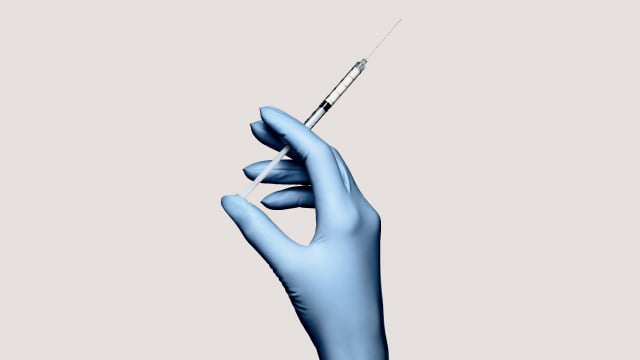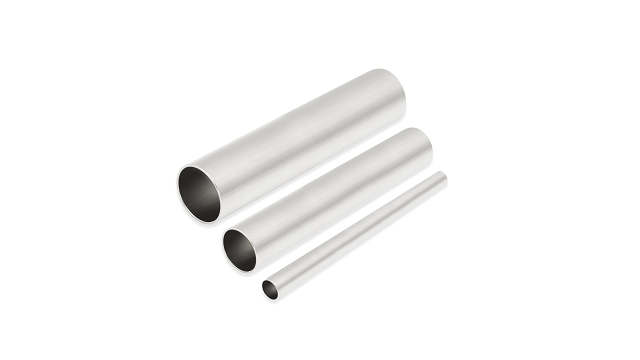How to choose quality tubes and fittings for pharmaceutical processes (pt 2): Surface finish
In a pharmaceutical/biotech plant, poor interior surface quality of the stainless-steel pipework is one of the main causes of corrosion problems and product contamination. The surface finish is often an overlooked area, but it is actually highly important, when you consider that 90% of the contact surface with the product fluid occur within the tubes and fitting.
DATE 2024-05-06In general, the smoother the internal surface of a tube, the less likely it is to corrode or harbour impurities/substances that will contaminate the product fluid. As such, achieving the optimum surface finish is crucial when manufacturing tubes and fittings for hygienic applications, especially within biotech and pharmaceutical processes.
Surface roughness according to ASME BPE standards
The roughness of any given surface is determined according to its Ra-value, which put simply is an average of all the individual measurements of a surface’s peaks and valleys. For stainless steel manufactured according to standard ASME BPE, the most common surface gradings are SF1 = Ra Max 0.51 μm (mechanically polished) and SF4 = Ra Max 0.38 μm (electropolished).
A common misconception when considering the qualities of the interior surface of a stainless-steel tube is that the lower the Ra-value, the smoother it must be and when people talk about Ra-values, it is not uncommon to hear them make statements such as: “a Ra-value of 0.4 μm must be better than one of 0.8 μm” or “the Ra-value is an easy way to tell everything about the hygienic grade of the surface” or “a low Ra-value means the surface is much better in preventing bacterial growth”.
However, this is not the case. The truth is more complicated as this picture shows:
Note the different topography of all these surfaces. The cold-rolled & pickled at the top and the 240-grit-polished both have the same average roughness value of 0.55 μm but look at the topography – it is very different. And if we look at electropolished at the bottom, versus the cold-drawn, you can see the cold-drawn has a Ra-value of 0.12 μm and electropolished is 0.32 μm, which is significantly higher. Nevertheless, the max deviation for the cold-drawn is almost three times higher than the electropolished. That is why it is also important to consider surface finishing and not just Ra-value when selecting tubes and fittings.
Electropolished surfaces are very clean and very tough surfaces. As you can see in the pictures above, the grinding traces are visible in the mechanically polished surface whereas the electropolished surface has a very pure finish.
Preventing contamination
The effect of surface finish on bacterial growth is also significant. If bacteria are present, they stick to surfaces whether they are of high roughness or low roughness. However, when it comes to residues/impurities left after cleaning, electropolished surfaces are far better than the mechanically polished at roughness values of both 0.8 and 0.4.
So, how do we electropolish? An electric current is run between two cathodes through an electrolyte, an acidic fluid, in a tank and the component to be polished is immersed in the fluid to form the anode. When the current is switched on, metallic ions from the peaks on the surface of the component move to the cathodes creating a very smooth finished surface once the process is complete. As well as creating a smooth, clean surface, electropolishing also enriches the upper chromium layer of the steel so that any impurities, which might have developed in the manufacturing process, are very easy to detect – facilitating inspection and quality-control procedures.
The result is a tube of superior and consistent quality, which is ready to serve the demanding needs of pharmaceutical and biotech customers. Alfa Laval UltraPure tubes and fittings are manufactured according to BPE SF1, SF4, according to ASTM A 270, S2 and to grade 316L – marked with ASME BPE and internally electropolished in diameters ranging from ¼ inch to 6 inches.
This is the product range that we supply to our customers along with detailed documentation (Alfa Laval Q-doc) that supports and verifies the quality of Alfa Laval UltraPure tubes and fittings.
Want to enjoy a complete peace of mind while reaping the benefits of Alfa Laval UltraPure tubes and fittings? Stay tuned to our third and final blog in this short series.
Maybe you also find this relevant?
How to choose quality tubes and fittings for pharmaceutical processes about Material composition (pt 1).


